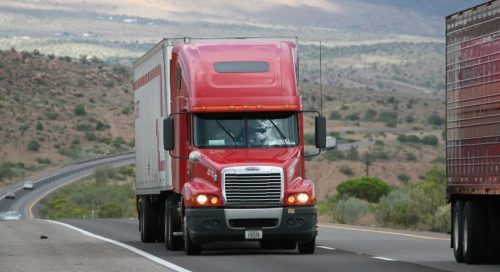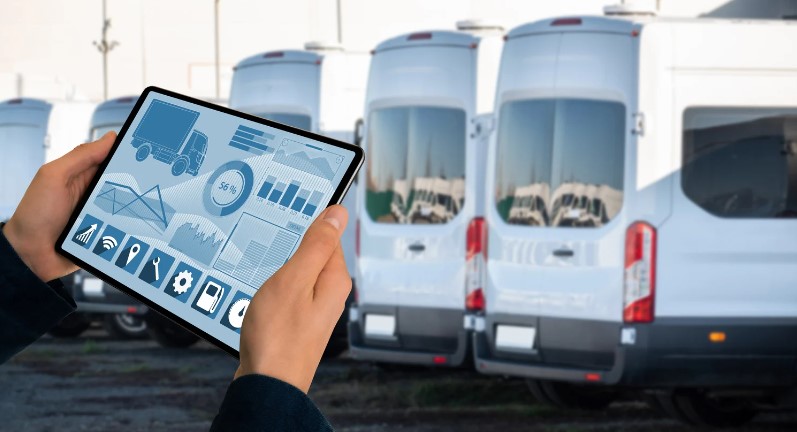Table of Contents
For businesses that manage fleets, ensuring the security of both vehicles and goods is crucial. Fleet operations come with inherent risks, vehicles can get stolen, goods can be lost, and driver safety can be compromised. One solution that has proven invaluable in mitigating these risks is fleet tracking solutions.
Through the use of GPS technology and telematics, these systems provide real-time monitoring of fleet operations, helping to enhance security and reduce risks across the board.
In this blog, I’ll explore how fleet tracking solutions can strengthen business security and significantly lower the chances of operational mishaps, making it easier to run a safer, more efficient fleet.
What Are Fleet Tracking Solutions?
![]()
At the core, fleet tracking solutions utilise GPS technology to monitor the location, movement, and condition of vehicles within a fleet. Modern systems also incorporate telematics to gather real-time data on vehicle performance and driver behaviour, allowing businesses to have a comprehensive view of their fleet’s activities.
This real-time data helps reduce operational risks and ensures the security of both the vehicles and the goods they transport.
With the ability to monitor each vehicle’s location and status, I’ve found fleet tracking to be indispensable in preventing theft, improving driver safety, and optimising operations, all of which contribute to reducing risks within the business.
How Do Fleet Tracking Solutions Enhance Security?
Preventing Vehicle Theft
One of the primary concerns for any fleet-based business is vehicle theft. Losing a vehicle doesn’t just mean losing the asset itself but also the potential revenue it could generate.
Fleet tracking solutions provide a powerful safeguard against theft by allowing me to monitor my vehicles in real time. If a vehicle deviates from its route or is moved without authorisation, I receive immediate alerts, allowing for quick action.
Advanced systems also include geofencing capabilities, which enable me to set virtual boundaries for where vehicles should operate. If a vehicle crosses these boundaries, an alert is triggered, helping prevent unauthorised usage or theft.
This feature alone has provided me peace of mind, knowing that I can track and potentially recover a stolen vehicle swiftly before significant loss occurs.
Safeguarding Goods in Transit
Fleet tracking doesn’t just protect the vehicle, it also ensures the security of the goods being transported. Real-time tracking enables me to monitor the exact location of deliveries, ensuring that goods arrive at their destination without any deviation or delay.
This is particularly useful for high-value or sensitive goods, where theft or tampering could be financially devastating.
Furthermore, fleet tracking systems allow me to maintain detailed records of delivery routes and times, providing an added layer of transparency. Should any incident occur, such as an unauthorised stop or suspicious behaviour, I can address the issue immediately and investigate, minimising potential losses.
Reducing Risk Through Driver Safety Monitoring
Monitoring Driver Behaviour

One of the less obvious but highly impactful benefits of fleet tracking solutions is the ability to monitor driver behaviour. Poor driving habits such as speeding, harsh braking, and unnecessary idling not only increase the risk of accidents but also lead to higher fuel consumption and vehicle wear.
By tracking these behaviours in real time, I can provide targeted feedback to drivers, helping them adopt safer driving practices.
Fleet tracking systems alert me to any unsafe behaviour, allowing me to intervene quickly and prevent potential accidents. Over time, this reduces the risk of incidents on the road, lowers insurance premiums, and improves overall fleet efficiency. It’s also a win for drivers, as they become more aware of their habits and develop a greater sense of responsibility on the job.
Real-Time Incident Response
Another major way that fleet tracking reduces risk is through real-time incident response. Should a breakdown or accident occur, I am immediately notified, enabling me to respond quickly.
Knowing the exact location of the incident allows me to send assistance swiftly, ensuring that the driver and vehicle receive the help they need as soon as possible.
This rapid response not only reduces the downtime of the vehicle but also enhances the safety of the driver. In situations involving dangerous goods or hazardous materials, this level of monitoring and quick response is even more crucial for reducing the risk of larger-scale incidents.
Enhancing Compliance and Reducing Legal Risks
Meeting Regulatory Standards
Operating a fleet comes with a host of legal responsibilities. Drivers must comply with working hour regulations, and vehicles must be regularly maintained and safe for the road. Non-compliance with these regulations can lead to heavy fines and legal action. This is where fleet tracking solutions shine by helping businesses stay compliant with UK driving laws.
By integrating telematics into fleet management, I can monitor driver hours to ensure compliance with driver work-time regulations. The system records how long a driver has been on the road, reducing the risk of fatigue-related accidents and helping avoid legal penalties.
Additionally, fleet tracking systems often include maintenance alerts, ensuring that all vehicles are kept in roadworthy condition, further reducing the chance of a legal issue arising.
Ensuring Vehicle Maintenance and Safety

Regular maintenance is essential for ensuring vehicle safety and avoiding costly breakdowns. Fleet tracking systems, particularly those with telematics capabilities, monitor key vehicle performance metrics such as engine health, brake function, and fuel efficiency.
By tracking these metrics, I can stay on top of necessary repairs and schedule maintenance before problems arise, reducing the risk of accidents caused by mechanical failure.
This predictive maintenance approach helps me maintain a safer fleet, reduce downtime, and prevent small issues from turning into major repairs. It also ensures that the fleet meets all safety standards, further reducing legal and operational risks.
The Role of Asset Tracking Solutions in Telematics
In addition to fleet tracking, many telematics systems include asset tracking solutions, which allow businesses to monitor the location and condition of valuable assets such as trailers, containers, or specialised equipment. Asset tracking solutions provide real-time data on not just the vehicles, but also the goods and tools they carry.
For businesses handling high-value cargo, this capability is essential in ensuring that assets are always accounted for and secure. I’ve found that using telematics to track assets gives me greater control and visibility over the entire supply chain, helping to reduce the risk of theft, loss, or misplacement.
Knowing where my assets are at all times means I can optimise logistics, prevent delays, and respond quickly to any security concerns.
Mitigating Financial Risks with Improved Efficiency
Lowering Operational Costs
Fleet tracking doesn’t just enhance security—it also contributes to reducing overall operational costs. With real-time data on fuel consumption, route efficiency, and driver performance, I can make informed decisions that lead to cost savings.
Optimising routes reduces fuel expenses, and encouraging safe driving habits lowers maintenance costs and accident-related expenses.
By ensuring that vehicles operate efficiently and securely, fleet tracking allows me to protect the business from unnecessary financial strain caused by inefficiency or theft.
Insurance Benefits

Many insurance companies offer lower premiums for businesses that use asset tracking solutions. The reason is simple: fleet tracking reduces the likelihood of theft, accidents, and other incidents that would otherwise result in costly insurance claims.
By showing insurers that my business uses these advanced security and safety measures, I can often negotiate better rates, leading to significant savings over time.
The Role of Telematics in Fleet Security
A crucial component of modern fleet tracking solutions is telematics, which allows me to track and monitor a range of vehicle data in real time. Telematics systems provide insights into vehicle performance, driver behaviour, and location, helping to enhance both security and efficiency.
With telematics, I can monitor everything from fuel consumption to engine health, enabling me to take a proactive approach to vehicle maintenance and security.
Telematics also plays a vital role in fleet security by providing instant alerts when any suspicious activity occurs, such as unauthorised vehicle movement or erratic driving.
These alerts allow me to react quickly and mitigate risks, whether it’s recovering a stolen vehicle or addressing a potential safety hazard before it escalates. As a result, telematics has become an indispensable tool for reducing risks and maintaining fleet security.
Conclusion
Fleet tracking solutions are invaluable for enhancing the security of your fleet and reducing risks across your operations. From preventing vehicle theft to monitoring driver behaviour and ensuring compliance with legal standards, these systems provide a level of control and oversight that is essential in today’s business environment.
With the integration of telematics and real-time data, I’ve found that fleet tracking not only improves safety but also contributes to significant cost savings, operational efficiency, and overall peace of mind.
In an age where security risks are constantly evolving, investing in fleet tracking solutions is not just a smart move, it’s a necessary one to protect your business, your drivers, and your assets.




